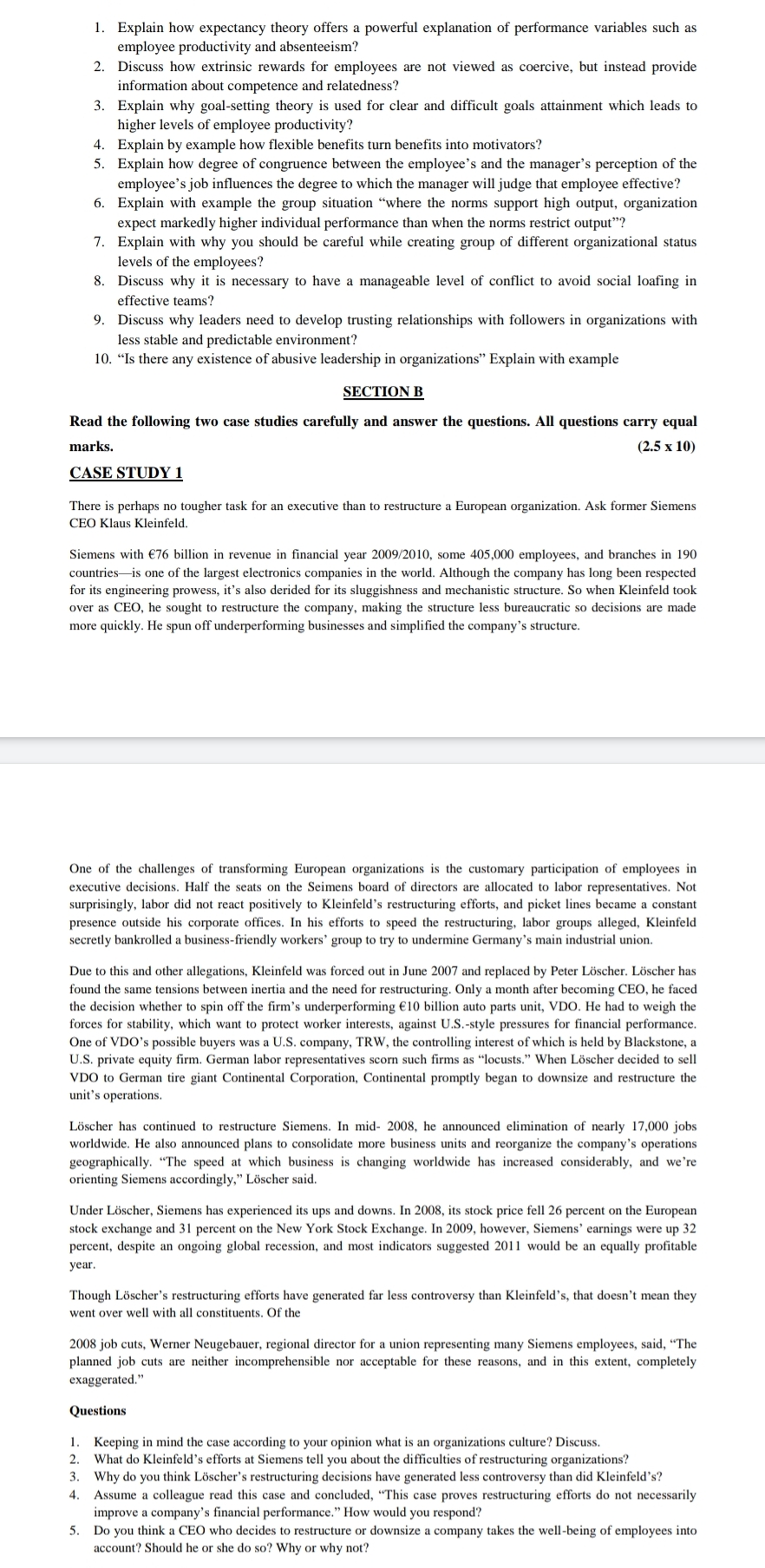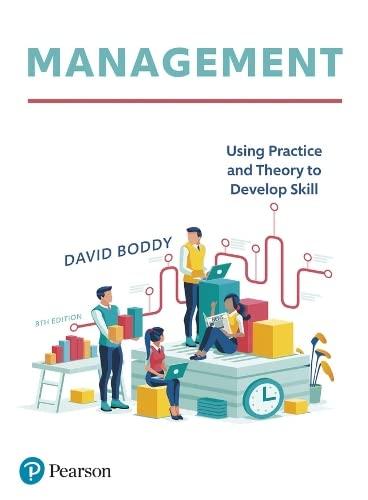these questions are for subject ORGANIZATIONAL BEHAVIOR, and it is urgent
1. Explain how expectancy theory offers a powerful explanation of performance variables such as employee productivity and absenteeism? 2. Discuss how extrinsic rewards for employees are not viewed as coercive. but instead provide information about competence and relatedness? 3. Explain why goal-setting theory is used for clear and difcult goals attainment which leads to higher levels of employee productivity? 4. Explain by example how exible benefits tum benets into motivators? 5. Explain how degree of congruence between the employee's and the manager's perception of the employee's job inuences the degree to which the manager will judge that employee effective? I5. Explain with example the group situation \"where the norms support high output. organization expect markedly higher individual performance than when the norms restrict output\"? 7. Explain with why you should be careful while creating group of different organizational status levels of the employees? 8. Discuss why it is necessary to have a manageable level of conict to avoid social loafrng in effective teams? 9. Discuss why leaders need to develop trusting relationships with followers in organizations with less stable and predictable environment? 10. \"Is there any existence of abusive leadership in organizations\" Explain with example m Read the following two case studies carefully and answer the questions. All questions carry equal marlin. (2.5 x Ill) w Then: is perhaps no tougher task for an executive than to restructure a European organization. Ask former Siemens CEO Klaus Kleinfeld. Siemens with 36 billion in revenue in nancial year 200912010. some 405.\" employees. and branches in 190 countriesis one of the largest electronics comprmies in the wld. Although the company has long been respected for its engineering prowess, it's also derided for its sluggishness and mechanistic structure. So when Kleinfeld took over as CEO. he sought to restructure the company. making the structure less bureaucratic so decisions are made more quickly. HE Spun off underperforming businesses and simplied the company's structure. One of the challenges of tr'anslorming European organizations is the customary participation of employees in executive decisions. Half the seats on the Seimens board of directors are allocated to labor representatives. Not. surprisingly. labor did not react positively to Kleinfeld': restructuring efforts. and picket lines became a constant presence outside his corporate ofcer. in his efforts to speed the restructuring. labor groups alleged. Kleinfelcl secretly bankrolled a business-friendly workers' group to try to undermine Germany's main industrial union. Due to this and other allegations. Kleinl'eld was forced out in June 2007 and replaced by Peter Ltischer. Ltischer has found the same tensions between inertia and the need for restructuring. Only a month after becoming CEO. he faced the decision whether to spin off the rm's underpcrforrning 10 billion auto parts unit. VDO. He had to weigh the forces for stability. which went to protect worker interests. against U.S.-style pressures for nancial performance. One of VDO's possible buyers was a US. company. TRW. the controlling interest of which is held by Blackstone. a US. private equity rm. German labor representatives scorn such rms as "locusts." When Ldscher decided to sell VDO to German tire giant Continental Corporation. Continental promptly began to downsize and restructure the unit's operations. Lscher has continued to restructure Siemens. in mid- 2008. he announwd elimination of nearly 17.000 jobs worldwide. He also announced plans to consolidate more business units and reorganize the company's operations geographically. \"The speed at which business is changing worldwide has increased considerably. and we're orienting Siemens accordingly." Lbscher said. Under Loscher. Siemens has experienced its ups and downs. In 2008. its stock price fell 26 percent on the European stock exchange and 31 percent on the New York Stock Exchange. In 2009. however. Siemena' earnings were up 32 percent. despite an ongoing global messiah. and most indicators suggested 20\" would be an equally protable year. Though Ldscher's restructuring efforts have generated for less controversy than Kleinfeld's. that doesn't mean they went over well with all constituents. Ofrhe 2008 job cuts. Werner Neugebauer, regional director for a union representing many Siemens employees. said, "The planned job cuts are neither incomprehensible nor acceptable for these reasons. and in this extent. completely exaggerated.\" Questions 1. Keeping in mind the case according to your opinion what is an organizations culture? Discuss. 2. What do Kleinfeld's efforts at Siemens tell you shout the difculties of restructuring organizxtions? 3. Why do you think Ldacher's restructuring decisions have generated less controversy than did Kleinfeld's? 4. Assume a colleague read this case and concluded. "This case proves restructuring efforts do not necessarily improve a. company's nancial perfomranee." How would you respond? 5. Do you think a CEO who decides to restmcture or downsize a company takes the well-being of employees into account? Should he or she do so? Why or why not







